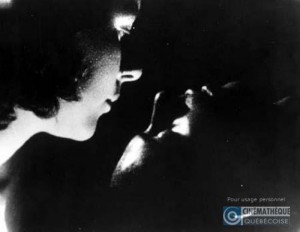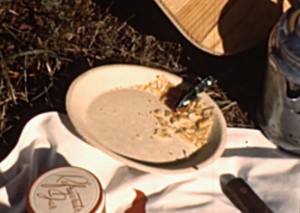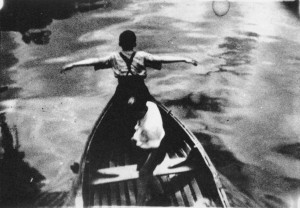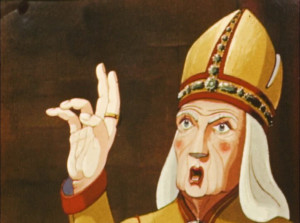"Item is a film production of a trip from Naples to Nice taken by Dr. Willinsky and his wife, Sadie. In the form of a travelogue, footage of landmarks, ancient ruins and the local population is interspersed with captions and maps that were added in by Dr. Willinsky to denote locations and offer context. Featured cities include, Pompeii, Salerno, Rome, Cannes, Antibes, and Menton. Footage includes shots of Vesuvius, images taken from a gondala ride in Venice, Venetian street performers, market scenes, cathedrals, children dressed in costumes for a carnival, and various local craftsmen at work. Sadie is occassionally spotted in the footage interacting with locals and with travel companions who are probably relatives or family friends." Ontario Jewish Archives.
"School children are shown how to make two kinds of simple masks using paper and paste" (Catalog of Copyright Entries, 113).

"Distinctive for its superb blend of old and new visual techniques coupled with an unusual sound track, the film was unanimously selected as the winning entry [in the amateur category at the Canadian Film Awards in 1950]" (Topalovich, 10).
"The film is credited to Evelyn, who captures her husband’s collecting habits of “everything and anything.” This time it happens to be driftwood. Title cards of dialogue are interspersed with images of John and Evelyn collecting driftwood along a Wisconsin beach." Chicago Film Archives
"Film about the Woodley’s at their place in the country." Library and Archives Canada.
"Film about how to make films." Library and Archives Canada.
"This is a film about a hobo who steals a pie from a windowsill." Library and Archives Canada.

A group of families takes separate vacations – the husbands go fishing, while the wives and children choose to hold a picnic. Both vacationing groups encounter obstacles that disrupt their plans.

"An impressionistic portrait of city life during a day off in the summertime, with poetic narration set opposite some very observant and intimate views of Vancouver and its inhabitants. These include numerous street scenes; departure of the passenger ferry 'Hollyburn'; shots of and from Interurban railway and streetcars; sequences on Chinatown, Kitsilano Beach, Stanley Park, Victory Square, and the downtown waterfront; and a glimpse inside a typical beer parlour. The film received honourable mention in the amateur category at the 1950 Canadian Film Awards." (BC Archives)
Opening credit reads: "The Vancouver Branch of the National Film Society presents..."
Additional credits (on 1986 restored version): "Restored 1986 by Dennis J. Duffy for National Film Week '86 in co-operation with Canadian Filmmakers Distribution West and the Provincial Archives of British Columbia. Restoration funded by BC Heritage Trust."

"Émile Gallet, ACL, a man of rare talents and infinite patience, treated us to a showing the other day of his 16mm. color cartoon, The Legend of St. Nicholas, which, with a six year interruption by the war, has been in the making since 1938. Based on an old French folk song of the 12th century, the cartoon relates the fairy tale adventures of three little children, a wicked butcher and kindly St. Nicholas." Movie Makers, Sept. 1949, 327.
Total Pages: 299